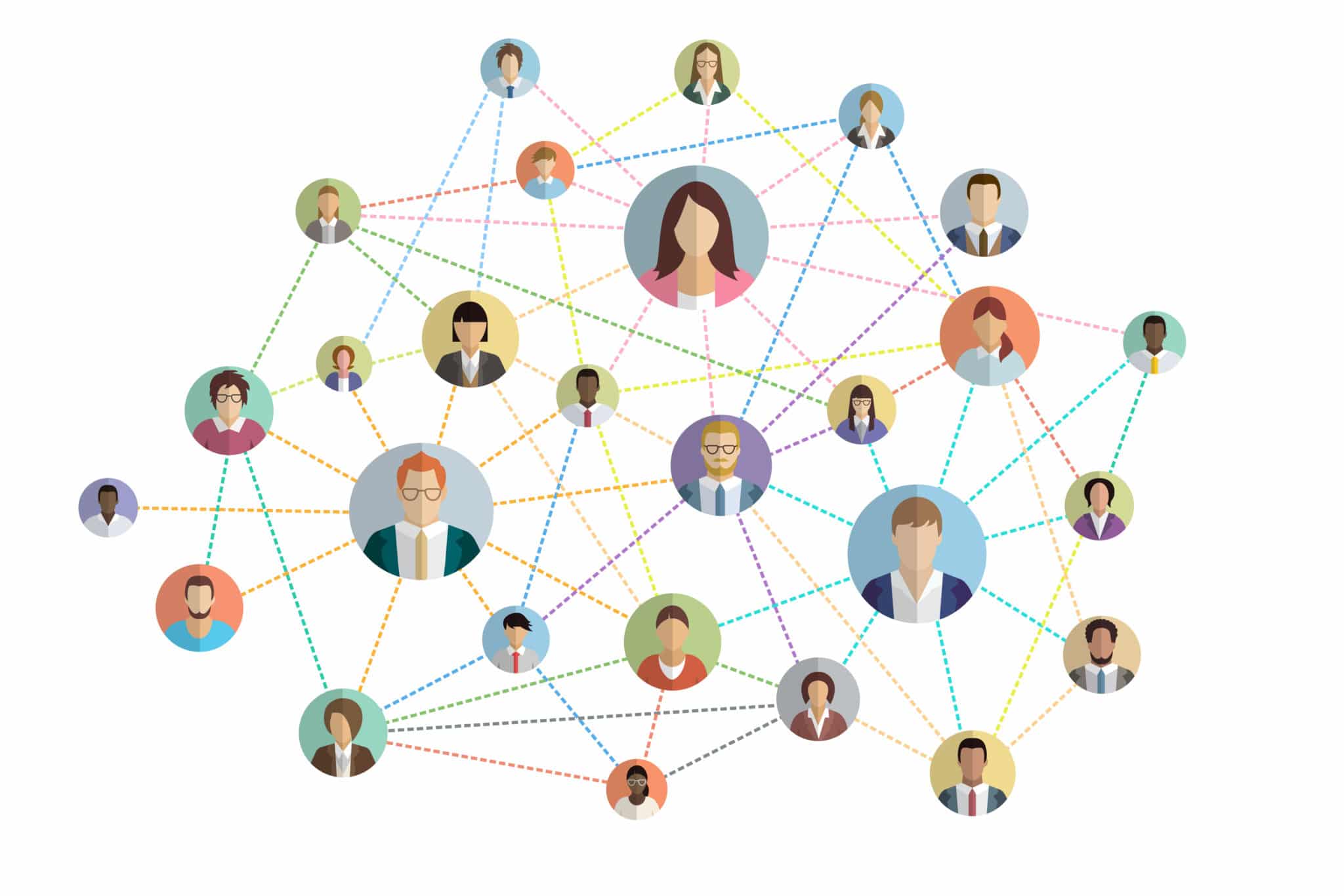 If you read back through event trends and predictions blogs of the past several years, you will find many references to building online event communities to support in-person events.
If you read back through event trends and predictions blogs of the past several years, you will find many references to building online event communities to support in-person events.
So, what happened?
Continued success is what happened. Our traditional events continued to grow in both attendance and revenue. In addition, their relative predictability and reliability made them desirable for organizations, associations and independent show organizers of all sizes, many of whom events are often a large portion of their organization’s budget.
Sure, there were years with small fluctuations by city choice, weather-related issues, or local and regional incidents that impacted a host city. Still, these were frequently acute and effected only a minuscule fraction of the events industry. For example, even shortly after September 11th, I was chairing a large outdoor, 60,000 plus attendee event, and we were able to move forward with only slight modifications to our event. We plan for these types of things – it’s what we do.
In mid-March 2020, that all changed. COVID-19 revealed that in-person events were far more fragile than anyone imagined. The New York Times quoted me last year; nobody had this in their event planning playbook. Many were forced to cancel or postpone their events with no alternative. Others with more runway were able to pivot to a virtual event, often their very first.
Most professionals were “on the job training” as they built out virtual experiences in unfamiliar and new and emerging event technology. Early on, attendees and exhibitors alike understood the challenges and want to remain involved to support the organization and event. However, all audiences had little experience in engaging in this new world.
As COVID moved from a few-week event to a full-blown global pandemic lasting through today, there have been many lessons learned and opportunities for event professionals to build their events to better weather the post-pandemic era upon us.
Bigger and Wider Audiences in the Virtual World

The removal of many traditional in-person barriers such as time, travel and expense opened the door to wide-ranging audiences at virtual events. Countless organizers saw participation from entirely new audiences–from geographic diversity to adjacent markets, the level playing field opened unseen doors. Indeed, some of this growth can be attributed to a lower price point (sometimes free), but these new contacts represented untapped potential.
The prospect is now on organizers, membership managers and marketing teams to harness this audience going forward as they have already shown a propensity to engage virtually.
Connecting these new and existing audiences in more meaningful ways throughout the year online should generate new opportunities. Even those who may never attend an in-person event (for whatever reason) are still valuable through increased engagement with your exhibitors and sponsors, membership capacity, participation, or additional purchases with your organization.
Engagement Wins with Greater Competition
The upside to the removal of those barriers has been the ability for more to participate virtually. The downside is the greater competition of digital experiences, both personally and professionally. This is a significant shift from competitor events rarely, if ever being in the same venue, location, dates or even times. As many are aware, larger tradeshows are often booked 5-10 years in advance to avoid competitor events and secure prime locations.
However, the technology and ability to host virtual events on short notice with no physical location anchoring them have expanded the marketplace extensively. In addition, the rising trend for online content such as webinars has created a crowded space of content, connections and commerce.
CEIR reported in December of 2020 that only 54% of registrants converted to attendees. That number is expected to decrease as events return to in-person or hybrid and virtual fatigue gains strength. What is clear is that a pre-COVID registration no longer represents a lower-funnel activity. The funnel has flipped with registration now at the top and engagement far more predictive to event success and satisfaction.
Engagement is the new currency. Regardless of approach, virtual, hybrid or in-person, to compete in this crowded space, event organizers will need to build ways to connect all the audiences pre, during, and post-event. These strategic and far more frequent interactions will not only be what attendees are looking for; they will demand it as a part of their total in-person package. Likewise, exhibitors and sponsors will also be searching for events that mobilize the movement and connect them
with their desired audiences in meaningful ways. Bottom line, you can’t just have a three-day event any longer.
How is a Community Different from an Events Community?
While it may seem obvious, communities are groups of like-minded individuals sharing common interests and goals, learning new things, solving challenges, and conducting business. It sounds like your event.
Communities have been around since man first began to walk the earth. They have grown exponentially since the advent of the internet. The adage, “birds of a feather, flock together,” is true of our networks to professional ones. Communities bring together people the way events do.
For those with shuttered in-person conferences and tradeshows, the virtual world became the only opportunity to connect with their communities. Thus, the challenge arose when attempting to take a three-day engagement and expect the same results in an online world.
An events community is not just another occasion to connect with your membership, audience, or constituents. It is a way to stay in front of them year-round. And unlike traditional communities, these pay off with in-person meetings to share those desired experiences.
But We Already Have an Online Community?
Some associations, nonprofits and organizations have been utilizing online communities for years to maximize member engagement. My colleague, Erin Sullivan, recently interviewed several successful organizations who have enabled their members, volunteers and advocates to connect, communicate and collaborate in a digital space.
An events community is separate (and for a good reason). Like all good communities, a common purpose is a foundation. Just like your event, there are many subgoals each of your unique audiences is looking to achieve. They are often far different than your existing online community.
An exhibitor or sponsor, for example, wants to promote their products or services to your attendees. Your attendees want to solve challenges and connect with other attendees. Often this aligns with your educational programming or the products and services your exhibitors and sponsors want to showcase. Forums on topics, challenges, services needed, success stories are all examples of great event communities. There may be elements only available to paid registrants, open areas to attract new attendees or exhibitors and sponsors. And since this community is open beyond your traditional membership base, it will grow in new organic ways.
Also, do not confuse the fantastic efforts of your social media team. Building a community of social media followers is not the same as creating a safe and secure space for constituents to connect via a private, online branded community. They are both designed to build brand and event awareness and increase attendance, but strategically, they need to be viewed differently.
Don’t worry if you have not tackled an association community yet. An events community is an excellent post-pandemic starting point to drive revenue and understand the power and influence a community can have for your organization. We can also help.
Why Attendees and Exhibitors Love It
 Events can be overwhelming experiences for many individuals. Meeting new people, making connections, learning new ideas and even deciding where to go to dinner in a new town – all require a great deal of effort. This is especially true when you put these expectations into a few days’ timeframe.
Events can be overwhelming experiences for many individuals. Meeting new people, making connections, learning new ideas and even deciding where to go to dinner in a new town – all require a great deal of effort. This is especially true when you put these expectations into a few days’ timeframe.
One thing is clear, the desire to connect is stronger than ever with those sharing similar experiences or successes and resolving related challenges. Event communities nurture and facilitate those connections pre-event, so on-site they are far more natural and more beneficial. Conversations start “It’s nice to finally meet you in person” versus “who are you and what organization are you with?” The same is true for exhibitors and sponsors. Attendees will visit a booth with knowledge and intention of a company’s products and services versus, “what do you do?”
These curated and often topic-driven connections build over time in a comfortable and safe space. And while not every topic is around content, the discussions of the best places to eat (and possibly someone to share a meal with) drives value for attendees.
And unlike a traditional conference, the benefits don’t stop once it is over if you have an events community. The connections made before and during the event now have another venue to continue those relationships, learnings and excitement from your event.
The post-event engagement is often the most critical to maximizing the investment in your in-person event. As your audiences meet again in the online world, they will extend the life of your event and build loyalty and ownership – further driving future success.
Why Speakers (and their Content) Benefit

We have all been to a conference and walked into a session with a speaker who has little understanding of who the audience is. We have also been to an amazing session and wished we could continue the conversation far after the event. Event communities help solve these common challenges.
Much like connections and networking, having the ability to interact with speakers and content during all lifecycles of your event ultimately creates better content, more informed speakers and a greater affinity for your event. For example, speakers can monitor popular topics, challenges people are facing or even ask the audience what questions they want to be answered. In addition, speakers can modify their presentations for the most up-to-date content based on your community’s interactions.
Post-event, speakers can answer questions they could not answer live, offer post-session discussions and provide check-ins with attendees. Attendees can also post questions and watch the on-demand session if they missed that session.
Why Event Organizers Love It
There are so many benefits to event organizers beyond those listed above. Event communities increase Net Promoter Scores and retention because of the enhanced value offered to attendees. They drive additional revenue with fresh sponsorship and engagement opportunities for companies who want to interact with your key stakeholders. They also provide real-time intelligence and data on your event performance – from trending session discussions that might need a bigger room to popular locations you may want to maximize as a sponsorship opportunity. No other platform or event technology can offer this level of active data and insights in a non-obtrusive way while driving value for everyone involved.
Finally, the more engaged your audience is, they will likely attend and sponsor your other events. The more satisfied they are, the more likely they are to encourage others in their networks to become involved in your organization or attend your events.
Finally… the 365-day type of engagement every event professional has talked about for years.
